Continuing our Flower Power series….Forget-Me-Not
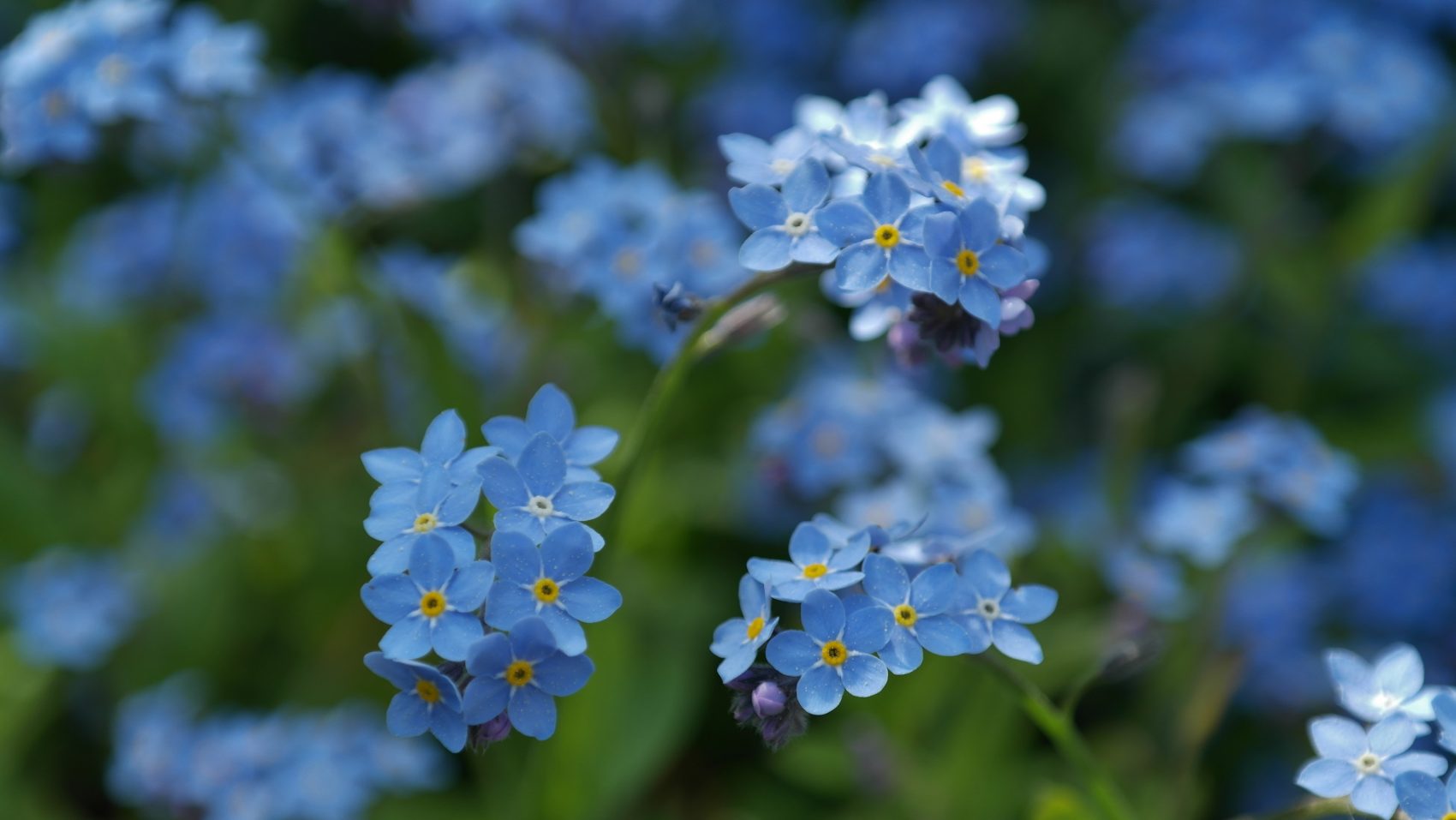
Forget-Me-Not brings this portion of the Flower Power series to a close with their own little message. Tiny, delicate, tough and unassuming, they provide wonderful fodder for relationship within the world of nature. Painting, poetry, reflection, meditation, cultivation in your garden, the scope is wide for communing with these little gems.
Perhaps most of all, Forget-Me-Nots remind us not to forget life’s tiny magical moments so we can allow some time for details that may seem small or insignificant. A card to an old acquaintance, a phone call to a friend, a date with yourself to sit quietly with nature – grouped together or even one out of a thousand such moments could easily change the course of your life or someone else’s in amazing and not-so-tiny ways.
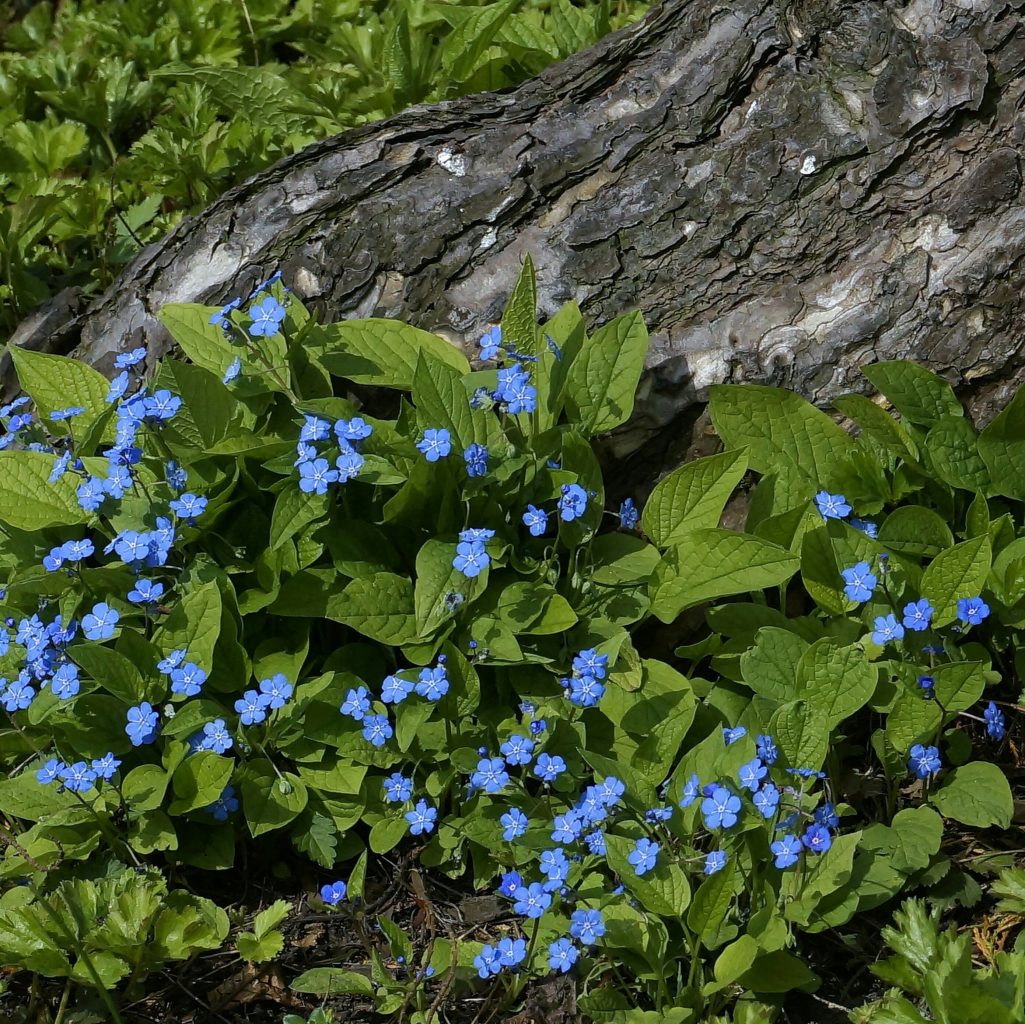
The botanical name is Myosotis scorpioides which translates to the other name for Forget-Me-Not, “scorpion grass”. Scorpion grass seems an odd reference for this delicately blossoming plant. The scorpion symbolism came about in the early 16th century because of the plant’s resemblance to the boraginaceous Forget-Me-Not as well as a Mediterranean species in the bean family, both of whose coiled pods resemble a scorpion’s tail.
“Myositis” comes from the Greek and translates to “mouse ears”, a reference to the shape of the leaves of some of the species. The name Forget-Me-Not and its association with love and remembrance dates back to the Middle Ages, especially in Old French and Middle High German societies.
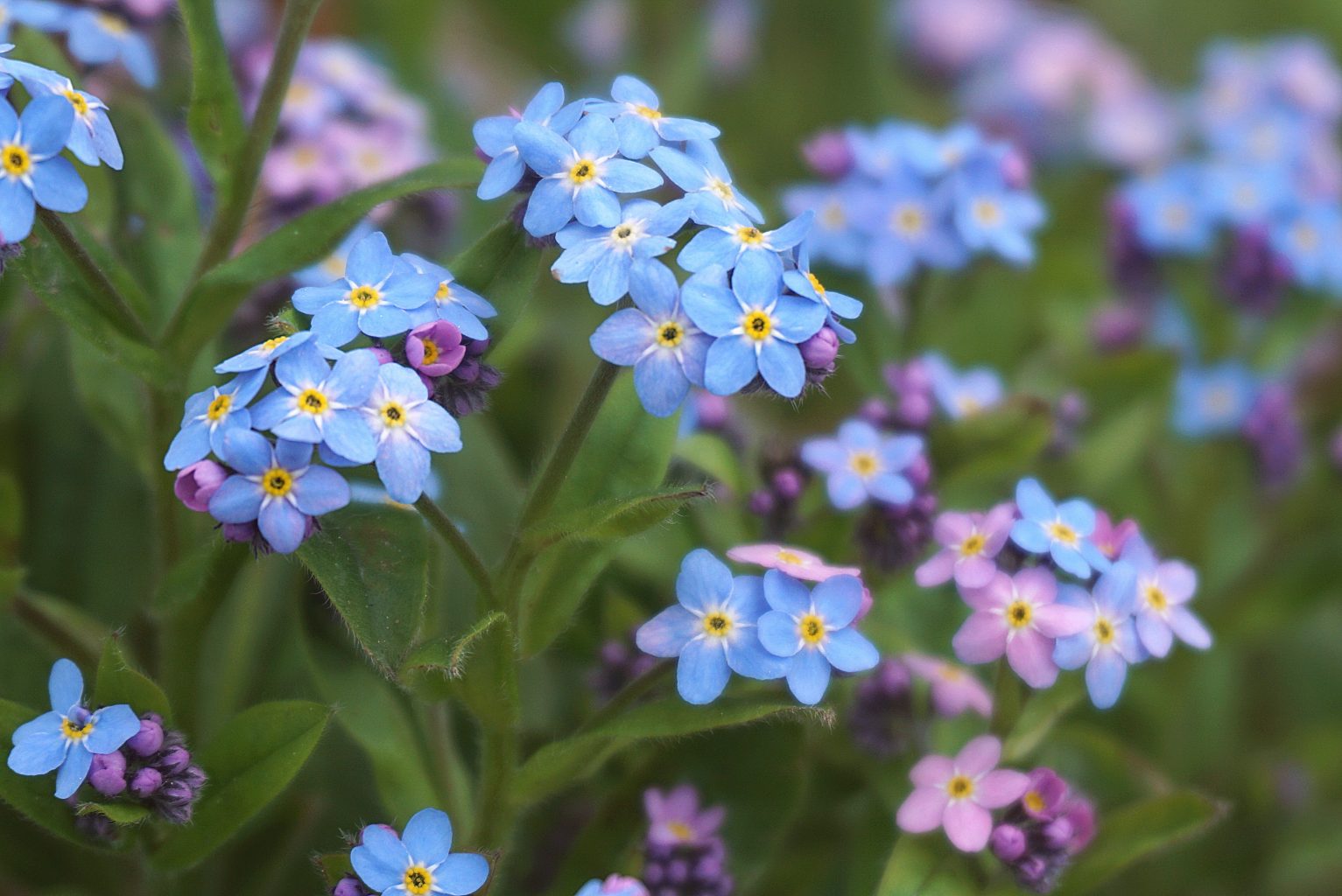
There are many myths and legends associated with Forget-Me-Nots vary, depending on the culture, but the symbolism does remain consistent: remembrance, fidelity, true love, never-ending connection.
In Norse mythology the goddess “Frigg” is said to have planted Forget-Me-Nots wherever soldiers went to war to ensure they were not forgotten by the gods when they were in battle.
In France, a knight walked by the river with his lady and, as he bent to pick a little blue flower, his heavy armor overbalanced his upper body causing him to fall into the river’s strong current. As he was swiftly carried away from his lady, he tossed the flower toward her and shouted, “Ne m’oubliez pas” (forget me not).
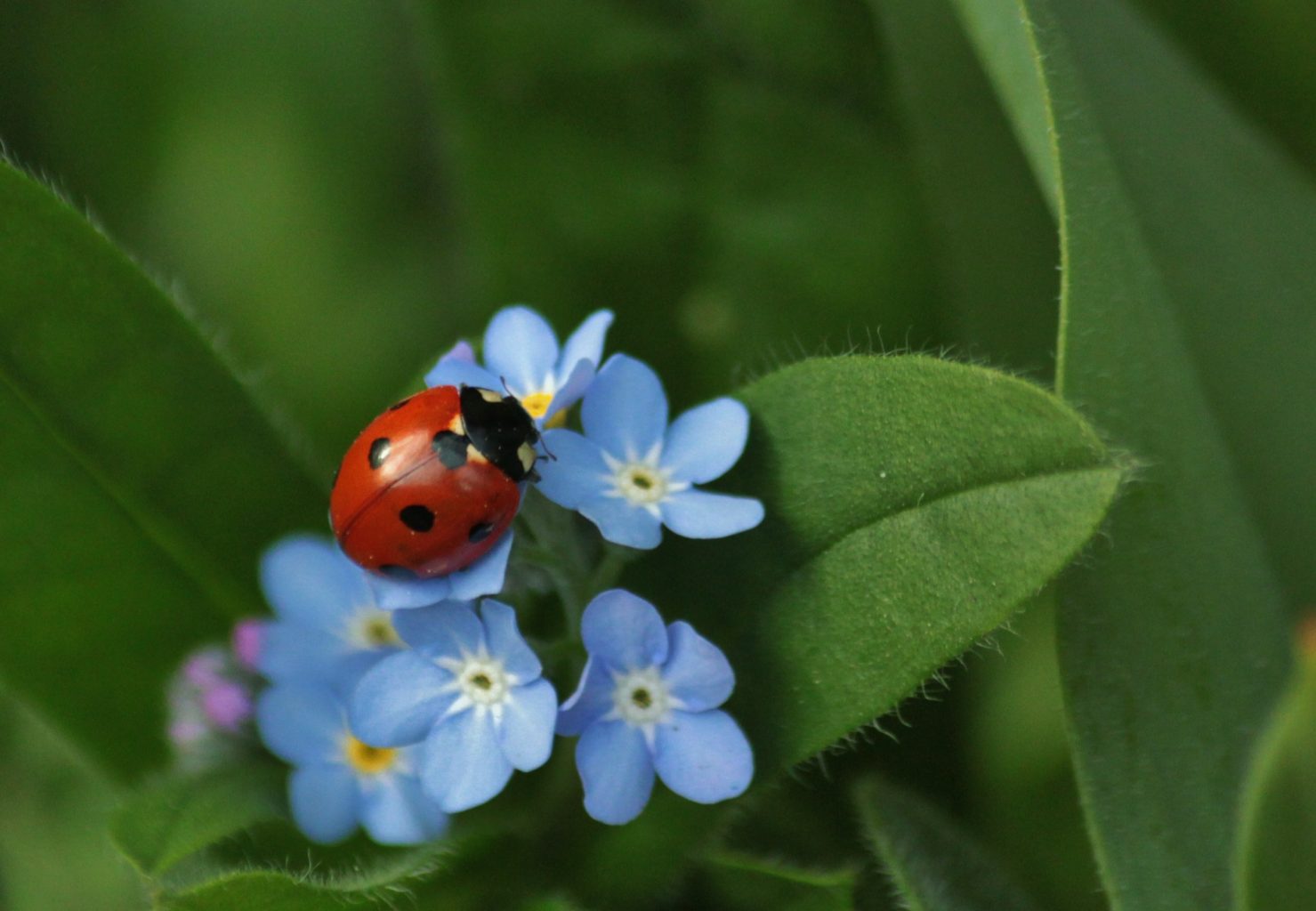
In Greek myth Zeus thought he’d named all the plants until a shout rang out. He saw it came from a small blue flower who, overlooked in the naming ceremonies, was yelling, “Forget me not!”. Upon hearing those words Zeus, feeling out of ideas at that time, used those same words to name the plant.
King Henry IV of England claimed Forget-Me-Not as his symbol while he was exiled in 1398 and, becoming fond of it, decided to carry on with the Forget-Me-Not symbolism even after he was able to return to England the following year.
In the Victorian era Forget-Me-Nots represented true love. They were gifted to someone as a symbol of fidelity and the intention of a long-lasting connection, romantic as well as between friends.
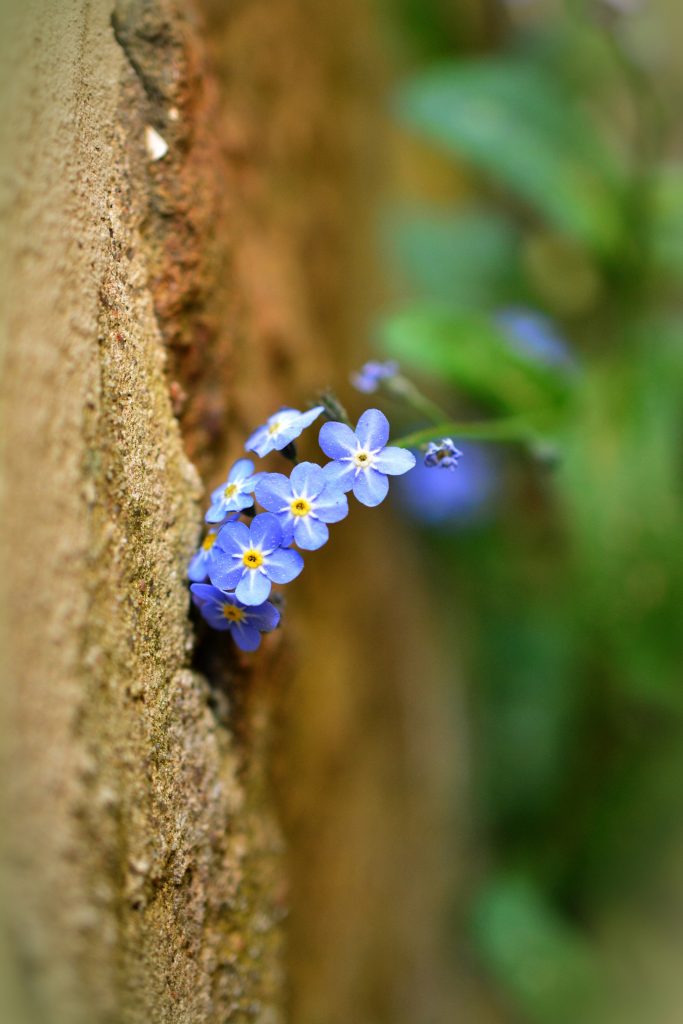
Forget-Me-Not brings this portion of the Flower Power series to a close with their own little message. Tiny, delicate, tough and unassuming, they provide wonderful fodder for relationship within the world of nature. Painting, poetry, reflection, meditation, cultivation in your garden, the scope is wide for communing with these little gems.
Perhaps most of all, Forget-Me-Nots remind us not to forget life’s tiny magical moments so we can allow some time for details that may seem small or insignificant. A card to an old acquaintance, a phone call to a friend, a date with yourself to sit quietly with nature – grouped together or even one out of a thousand such moments could easily change the course of your life or someone else’s in amazing and not-so-tiny ways.
